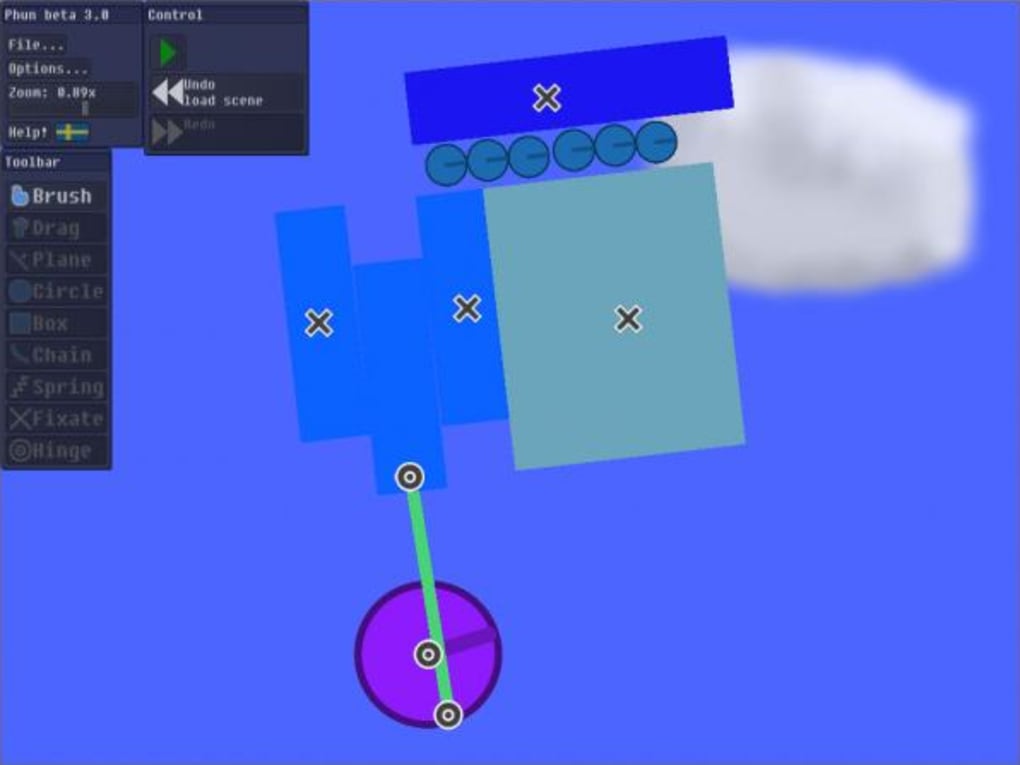
#Algodoo download scenes zip#
phz files (phun zip files) which was the scene format for Algodoo: Phun Edition beta 5.xx, these files contained thumbnails, textures used in the scene (user-made textures on objects), checksums and the. cfg files), a system made by Zuriki and Lukas Wolf (which was located at which now redirects to the latest file sharing system), all scenes from Phunbox (now renamed to "Phunbox1") were next converted to. phn files (phun scene files), with the remainder. Originally, the upload system for Phun was a small site at the Academic Computer Club, Umeå University, it was then later moved to the Phunland site, in an "upload" sub-directory (which has since been deleted), the file sharing system was then moved to "Phunbox", a system which received 16874 uploads (the majority of which were.

There are currently over 30,000 unique creations stored, with that number increasing every day. Sharing user created content among the Algodoo community is just as easy as it was in Phun with the usage of Algodoo's file sharing site, Algobox.

velocity at a certain time, position on the X and Y axis, velocity along the X and Y axis, etc, a new tab in the "options" menu that allows the user to visualize in real time many different forces that are affecting the objects in a scene,and many other new features, bug fixes, optimizations and improvements.Īs it is based upon Phun, Algodoo still works upon a constructionist learning paradigm. Other notable changes include the inclusion of a velocities menu, allowing one to set a geometry's velocity to a set value, incompressible water, which allows for much more realistic fluid simulation, a plotting menu which allows one to compare and contrast different properties of a geometry, i.e. The inclusion of optics has granted much more freedom in terms of using Algodoo's scripting language "Thyme", as one may now initiate events by hitting a geometry with a stream of laser light. Two notable changes include a new optics modeling engine and a snap-to grid feature allowing for higher precision scene creation. The simple interface of Algodoo allows a new user to enjoy themselves by creating simple cars and making their creations come to life with only a few clicks and drags, while still not limiting the creativity of those who want to make very complex machines, creatively achieving simulation objectives in a variety of ways.Īlgodoo allows users to modify the gravitational force, restitution, friction, refractive index, density, layers of collision, controller acceleration, destruction and mirror keys, texture (allowing users to place a picture on an object) and color (and alpha channel) of a polygon, color and refractive index of water, fade distance, color and speed of light of a laser, color, speed, strength, impulse break limit, state, direction and controls of a hinge/motor, strength constant, damping factor and target length of a spring and fade time of a tracer, giving a lot of choices for users to change to get different results.Īlthough the GUI is essentially the same as in Phun, many significant changes have occurred in the scope of Algodoo's simulations. Simulations in Algodoo involves using the given tools (polygon creation, cut, brush, box, circle, gear, plane, chain, spring, fixate, hinge, tracer and laser pen) and features (CSG, Velocity modification, attraction, refraction, killer/immortal objects, cutter objects, water and scripting) to create scenes with high levels of intricacy. In October 2011, Algoryx released two new programs. Algodoo's physics are based on the SPOOK linear constraint solver by Claude Lacoursière.

Algodoo is marketed as an educational tool and has much functionality with touch screen computers, computers with accelerometers, and the Intel Classmate PC. Algodoo was released on 1 September 2009 after significant delays in production. 6 To Download, Save, Retrieve, and Share FilesĪlgodoo is a physics-based 2D sandbox developed and sold by Algoryx Simulation AB, and is the successor to the popular physics application Phun.


 0 kommentar(er)
0 kommentar(er)
